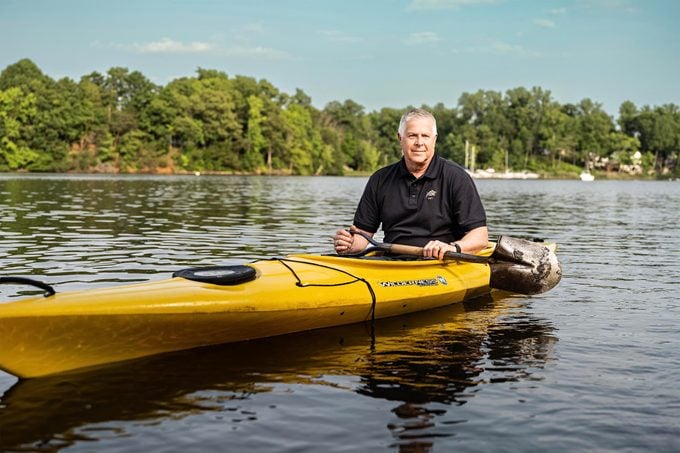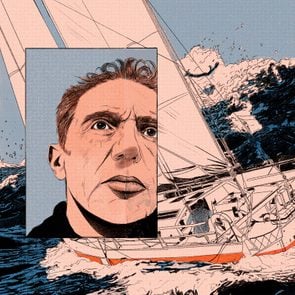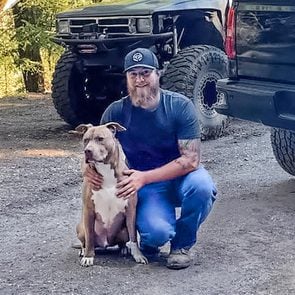How a 9/11 Survivor and His Son Bravely Rescued a Pilot from Icy Waters
Updated: Sep. 06, 2023
When a small plane crashes into a frozen creek, kayakers must navigate the ice to save the pilot

Imagine sitting in your breakfast nook having a cup of coffee when all of a sudden you see someone about to die. What would you do? Last Christmas, John Gelinne found out.
On Dec. 26, Gelinne, 60, was gazing out the back windows of his home in Edgewater, Maryland, at frozen Beards Creek. Children and grandchildren bustled around the house. That’s when Gelinne’s daughter, Aimee DeMayo, spotted the Piper Cherokee.
“Look!” she cried. Gelinne looked up just in time to see a small aircraft a few hundred yards away, losing altitude.
As the plane disappeared behind the trees, Gelinne, a former Navy commander and current cybersecurity expert, realized it was going to land in the creek. He flashed on a moment from more than 20 years earlier: Sept. 11, 2001. Gelinne was at work in the Pentagon in Washington, D.C., when terrorists crashed a jumbo jet into the building. He fled the chaos but has always wondered if he could have stayed inside and helped.
“To the right was the crisis, and to the left was escape. I don’t even know if I could’ve gone right, but I went left,” he recalled. “I always second-guessed myself about that decision.”
On this day, Gelinne didn’t hesitate. He ran down to the waterfront. The plane had skidded to a stop on the broad, frozen creek, far from shore. It was now sinking. The pilot was standing on the wing. Gelinne knew from his Navy training that even a few minutes in the icy water could kill the pilot.
Gelinne tested the ice with his foot and decided not to take any chances walking on it. So he and his son, John Jr., 37, pulled two kayaks out from under their back deck.

“I figured, if it can float on the water, it can slide on the ice,” Gelinne says.
The kayaks’ paddles proved too flimsy, so the pair tried using shovels to push the boats along. Their first attempts left them spinning in circles. But with some muscle, they made progress.
The two men set off, pushing their boats across the ice. It was exhausting work. When Gelinne reached the plane, it had broken through the ice and sunk; only its tail was visible. The pilot was standing on a tail wing, submerged up to his chest, surrounded by open water. Gelinne nudged his kayak off the ice and into the water, paddling toward the pilot and thinking, What if he panics? What if I flip?
With his son nearby, Gelinne focused on keeping the pilot calm, joking, “Just hang on to the boat as if you were hugging your wife.” The pilot grabbed the kayak’s bow. Now the two men were floating together, but Gelinne knew he had to get the pilot out of the water and up onto the shelf of unbroken ice behind him before the man lost too much body heat. But each time Gelinne tried to land atop the ice shelf, the kayak broke through. He needed the other man’s help.
“I said, ‘I’m going to push real hard, and you kick real hard,’ and damned if we didn’t get up onto the ice,” Gelinne says.
By now a police officer had arrived and radioed for help. A boat from the Maryland Department of Natural Resources appeared, breaking through ice as it arrived. It picked up the pilot, Steve Couchman, 71, and whisked him to safety; he would be treated for minor injuries. Later the boat returned to help Gelinne, now exhausted, to shore. John Jr. made his own way back after salvaging a bag containing vital flight logs, which the pilot had thrown onto the ice.
The cavalry had arrived just in time, Gelinne recalled. “I’m 60 years old,” he says. “There was no way I could get him to shore.” Still, he was satisfied he’d gone the right way that day.


